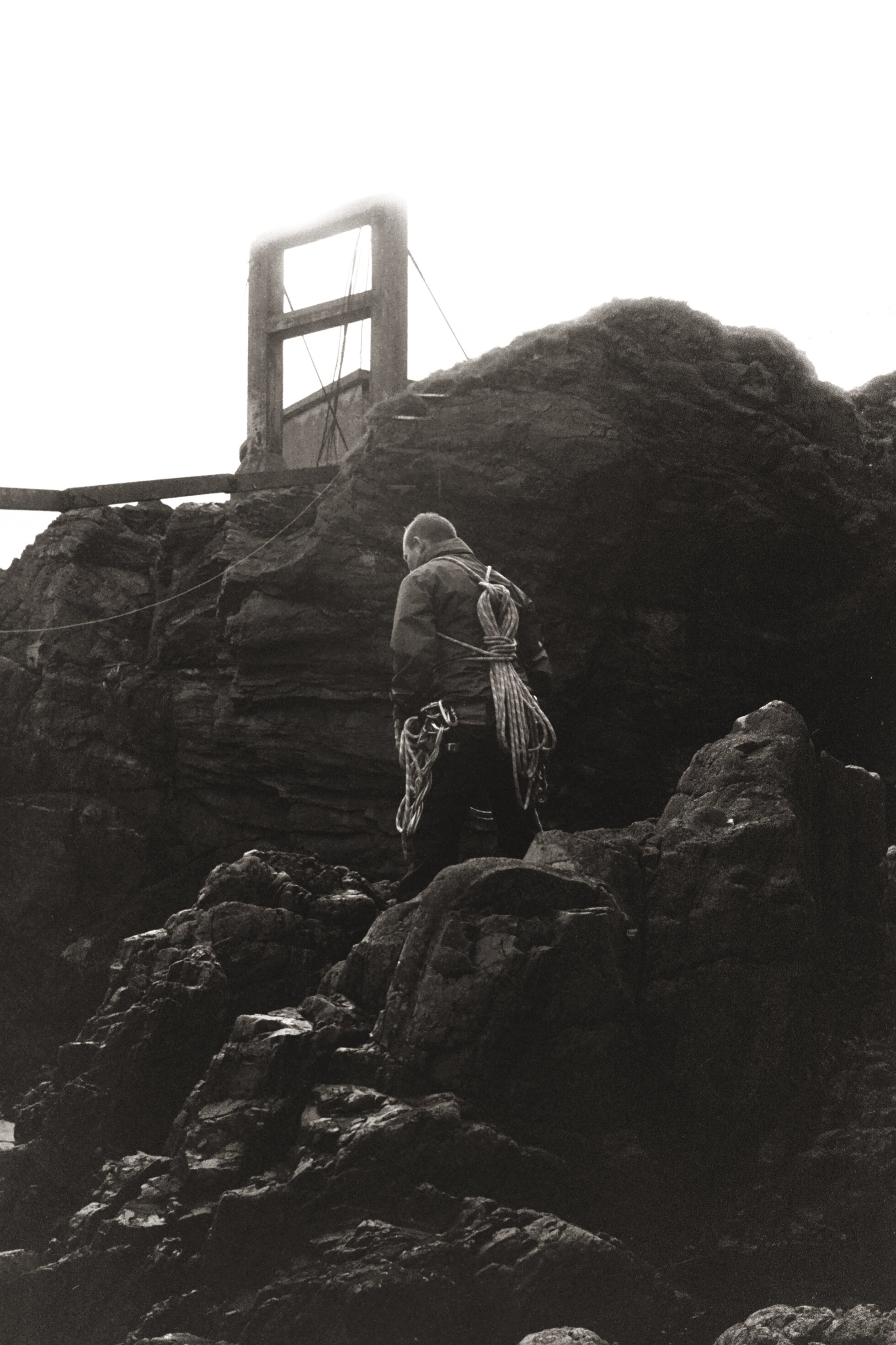In February of 2018, Simon Riddell and I met for the first time in real life, in the Scottish Highlands (where Simon lives). And, we immediately bonded over a mutual love of photography and insane adventures. As soon as I arrived, Simon mentioned an old WWII bunker, in the sea, inaccessible due to a fallen bridge. He and his dad (from whom he learned his joy of film photography) always talked of making it over to the bunker together. Sadly, Simon’s dad had died unexpectedly about a year before my visit. But we did our best to honor him by making it over to that bunker (using a drone as a grappling hook—what?!). And, of course, we took plenty of film photos.
At the end of that first trip, Simon was able to get in touch with the key holder for the Inchindown WWII oil storage facility. The underground facility was the world’s largest man-made structure when it was built, comprising 6 tanks (capable of holding 32 million gallons of fuel) and two access tunnels. We got a private tour my last day in Scotland, only having time to take one photo while in one of the tanks.
Simon, several months later, couldn’t sleep due to a massive cold. The next morning, I woke to a slew of voicemail messages. Basically, he had the brilliant Idea that we should go back to the tanks, take another photo, and print it on location. As a darkroom printer, was immediately hooked. Also, as a masochist, I insisted that we should, again, limit ourselves to only one shot.
In the months that followed, we discussed all the logistics to make it happen. We also decided that we wanted to print on 127cm fiber paper in the tunnels. If you are unaware, fiber paper can be rather finicky and requires a lot of water to process. And, of course, the tunnels have no running water to speak of. But, if you know me and Simon, you know we love challenges; so, we were determined to make it work… I should also mention neither of us had ever printed larger than 50x60cm before. So, yeah, we were stacking the deck against ourselves.
We also wanted to go from shot to print without leaving the facility. So, it was decided that we would sleep overnight in the (extremely eerie) tunnels. To help, we lined up someone to not only act as camera operator but serve as an extra set of hands. But, as fate would have it, he bailed on us two days before we were scheduled to enter the tanks.
We took only one negative of one of the six tanks, using an Intrepid 4x5 mkIII (both of us are predominantly large format photographers). We then made what might very well be the world’s largest darkroom in one of the access tunnels. We used inflatable pools to process the print—not only for their size, but because weight was a major issue in getting gear to the tunnel entrance.
Simon learned darkroom printing, his sense of adventure, and his ability to face challenges from his father. We decided that we should film the entire project and dedicate it to his dad. And that’s exactly what we did—we made a documentary out of it, replete with a full tour of the underground facility. Because we had to not only do the actual project, but also film ourselves, the whole ordeal took about three times longer than expected. We were incredibly tired. Everything (EVERYTHING) was covered in oil residue. So. Much. Oil. I mean, all my camera gear still has brown stains all over it. But, we did it. I wouldn’t have it any other way. And, I think Simon’s dad would be proud.
You can watch the trailer and learn more about the project at https://inchindown.com
Connect
Film photographer David Allen is based in France. See more of his work on his website, and connect with him on Instagram. Film photographer Simon Riddell is based in Scotland. See more of his work on his website and connect with him on Instagram. You can watch the trailer to Simon & David’s documentary here. And be sure to follow the project on Instagram!







